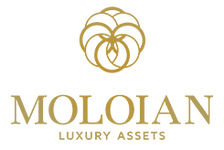
One of our least favorite things to tell people is that their coins are not real. While no one ever wants to hear that, it is interesting how different people can react to that news. I think at first, it is hard to believe, I mean how can anyone tell that just from looking at a photo? Or, more importantly, should you believe them? I mean, they can be wrong, right? Well, here's how: Certain designs were made only during certain years and/or certain mints. If you pull up with an 1886 Silver Dollar from Carson City, then Houston we have a problem, because there were no Carson City Dollars made in 1886. So, if we are looking at something that was never made we know it is fake. Second, is a list of known fakes that is so long they fill up a book. Believe me when I say, people have tried to fake money ever since there has been money. I have a whole box of said memorabilia, and we have done a video on it. To make matters worse, some people start with real coins and then alter them. An example is adding an "S" mintmark to a 1909 VDB Cent. If you can do that, and no one can tell, you just turned a $20 item into a $1,500 item. Talk about an incentive. Counterfeit coins are such a problem in the industry that the American Numismatic Association offers a week-long course on the subject. It was a great class and I highly recommend it for the serious collector as this stuff keeps getting better and better every year. And lastly, it is what we call in the industry "my spidey sense" tingling. The human brain is an amazing thing (the eighth great wonder of the world), as when it is in its own wheelhouse, it can go right to answers. What all that means is when you think about how many coins, these poor old eyeballs have seen and analyzed, our brains become this kind of counterfeit-detecting machine. I find it interesting that I can name something as a fake, long before I can articulate why I know it is. This one, understandably in this empirical world, is the hardest one for some people to accept. But it does not make the verdict any less true. I mean, what would be our point? We cannot buy and sell counterfeit items, and would never buy, or make an offer on, anything that is not real. So why would we ever want to tell our customers their stuff is not real if it is? It would make no sense. I mean I am sorry, but there is no big plot twist here. If we tell you something is suspect, it is for one of the three reasons above. So please don't shoot the messenger. :-)
